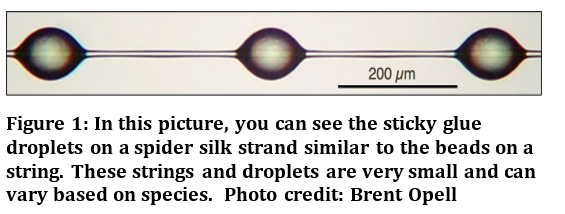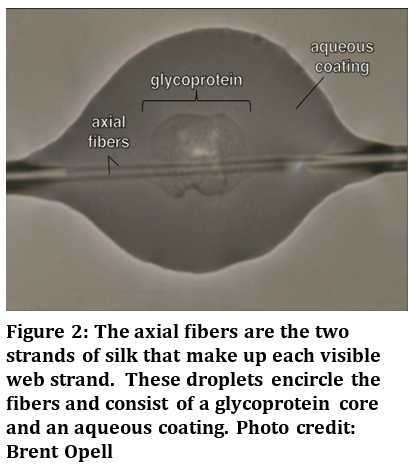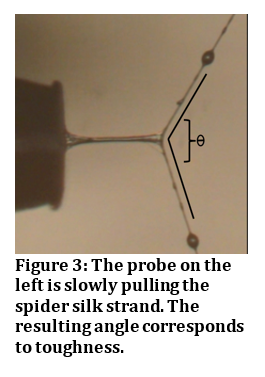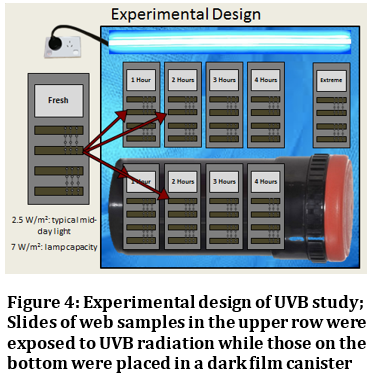|
Many of us are familiar with spider webs in our gardens. You may have even heard that their silk, which makes up their webs, is among the strongest materials found on Earth. But we never think about how the web is actually covered in tiny sticky droplets (Figure 1). These droplets of glue have been the fascination of Dr. Sarah Stellwagen, a scientist at the Army Research Laboratory.
Dr. Stellwagen’s research on the various environmental factors that affect spider glycoprotein glue; namely temperature, humidity and UVB radiation, not only increases our understanding of spider biology but also holds promise for bioengineering efforts to mimic the amazing adhesive properties of spider glue.
References Stellwagen, S. D., Opell, B. D. and Short, K. G. (2014). Temperature mediates the effect of humidity on the viscoelasticity of glycoprotein glue within the droplets of an orb-weaving spider's prey capture threads. The Journal of Experimental Biology 217, 1563-1569. Stellwagen, S. D., Opell, B. D., & Clouse, M. E. (2015). The impact of UVB radiation on the glycoprotein glue of orb-weaving spider capture thread. The Journal of experimental biology, 218(17), 2675-2684. About the authors: Jessica Grant is a master’s student in Dr. Bill Lamp’s lab. Her work looks at the cold tolerance and phenology of kudzu bugs and how that impacts the range expansion and integrated pest management of the bug. For more information visit mdkudzubug.org Lisa Kuder is a PhD student in Dennis vanEngelsdorp’s Bee Lab. Working with the MD State Highway Administration she is evaluating sustainable pathways for supporting highway rights-of-way pollinator initiatives. Click here for details. Comments are closed.
|
Categories
All
Archives
June 2024
|
Department of Entomology
University of Maryland
4112 Plant Sciences Building
College Park, MD 20742-4454
USA
Telephone: 301.405.3911
Fax: 301.314.9290
University of Maryland
4112 Plant Sciences Building
College Park, MD 20742-4454
USA
Telephone: 301.405.3911
Fax: 301.314.9290





 RSS Feed
RSS Feed




